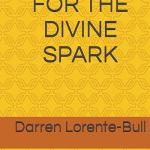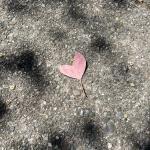After the second Pagan Ecumenical Council meeting in June 1974, Gwydion and I continued to discuss the problem of how to organize a “church” for Witches, now that we had a reason not to have to include Pagans in general. In a way, it was like trying to set up an organization for anarchists—so that one could be the Anarch. There were already organizations whose members were individual Witches, but these were not meeting the need.
Most Witches at that time clearly believed that one normally became a Witch by being initiated into a coven and trained. They made allowances for solitary Witches who were self-taught or in between covens, or who had been trained in a strict Master-apprentice relationship, but they generally did not accept someone as being a Witch without some corroborating evidence. For Witches in covens, such evidence existed—there were other people who could check their memories or the coven’s records to verify that someone had been initiated, raised to a higher degree, and so on. Whatever we set up, could we restrict membership to Witches who belonged to covens? And would covens be willing to share any information about their members?
The problem, in brief, was that (a) no Witch was going to believe that anyone could become a Witch merely by joining a church, of any sort, and (b) no Witch was going to grant any organization whatsoever the authority to decide whether an applicant was already a Witch. That seemed like a total impasse.
However, sometime during the fall of 1974, we recalled that Cotton Mather had said that Witches are organized like Congregationalists. Most of the victims executed at Salem Village probably were Congregationalists—but what sort of organization did he mean? The Congregationalists had merged into the United Church of Christ, and the Pacific School of Religion within the Graduate Theological Union was a UCC seminary. It was easy to find a copy of the UCC chartering document in the PSR library stacks—and a quick reading gave us the facts we needed.
In the UCC, individuals are members of their congregations, but it is the congregations as a whole, not individuals, that are members of the national church. If covens would be the members of a church for Witches, they would continue to decide on their own members, and deciding if a group was a coven could be based on objective criteria. Highly trained solitary Witches could be handled as special cases. In fact, the parallel between the Congregationalists’ situation and ours was so exact that when Craft terms were substituted for the Christian terms in the Preamble to the UCC charter, the result was a document that fit us exactly. A first draft of a charter for us and of its accompanying by-laws was created by using the UCC document as a structural guideline. Gwydion resumed pressing people to come to an organizing meeting, setting the date far enough ahead that almost no one could claim a previous engagement. The meeting took place on March 1, 1975, at Caerdderwen, his and Alison Harlow’s home in Oakland. The forty people there represented about 27 covens of many different traditions.
Alison Harlow later said,
“It was very interesting what people did at that meeting—they eyed each other suspiciously. They did not come to that meeting to create a great fellowship of love and trust. They came . . . to make sure nobody tried to pull any fast ones on them. `What is everybody here up to? I’ve got to make sure that nobody tries to set himself or herself up as (as Haragano would put it) the “High Pooptibah of the Infinite Invisibility.”‘ It was interesting that after a half hour of this kind of cautious stuff, we realized that if we were that cautious and that protective of our autonomy, maybe we had a basis for working together, once we recognized that no coven was going to give up its individual autonomy, and no group was going to delegate to some higher group any power over them.”
Soon enough, the Preamble to the draft charter was read to the group (the following text being what we arrived at during discussion):
“In the fulness of time and by the providence of our Lady, it seems good to us that we covenant with one another, as members of an ancient and honorable religion, to establish a Church that will further our mutual interests and purposes in the service of our Lady and our Lord.
We are agreed: that we worship the Goddess and recognize the Old Gods; that we are bound by the ethics of the traditional Laws of our religion; and that we recognize one another as being members of the same religion.
We are also agreed that we are not the only members of our religion. If the members of a local congregation [coven] choose not to join in this covenant and in the church thus created, their choice creates no presumption that they are not members of our religion.
We are agreed further that the reality of our religion lies within each local congregation, of whatever Tradition, and that there is no sovereign authority in our religion outside each local congregation. Therefore the local congregations which enter into this Covenant with one another cede to the Church which is thus created only as much sovereignty as they may agree the Church will need in order to function effectively as an instrument of their joint will.”
Because we did not want to restrict the church to only covens that closely followed the Gardnerian model, the charter provided:
that only covens as a whole would be regular members and would send representatives to an annual meeting to serve as the governing council of the church, electing officers from as many different Traditions as possible;
that the church would have no authority over the internal affairs of any coven and could not itself establish a coven or initiate anyone;
that the church would establish local councils to coordinate Craft concerns within some manageable region;
that it would have a code of ethics and fair procedures for encouraging compliance with this code; and
that, within these constraints, it would provide the same legal and social benefits for its members that all churches are allowed to provide under American law.
During discussions of details and of overall philosophy and policy, particularly the relative importance of the God and the Goddess, the women of Ursa Maior, the first all-women’s coven in the Bay area, asked whether same-sex covens would be allowed to join. The Gardnerians, after all, had always insisted that covens had to be of mixed gender; would it be claimed that they weren’t practicing the same religion as everybody else? All present agreed that the “same religion” provision was intended to exclude Satanists, magicians, metaphysical Christians, and anyone obviously practicing some other kind of religion, but not to exclude any varieties of the Craft. The Gardnerian rule seemed based at least in part on typical English homophobia and to have no basis in any Craft tradition. Furthermore, we could set an example by guaranteeing absolute equality to gays, lesbians, bisexuals, and people of any other sort of sexual preference. That prospect met with the group’s approval and settled the matter. (As far as I can tell, the Covenant of the Goddess was the first church in America to have openly gay and transsexual First Officers.)
After much discussion, we realized we were in unanimous agreement on the need for such a church, on the principles in the charter, and on the very wording of the Preamble. After adding a final article to the charter, we all signed it. It read:
“The undersigned witness that they were present at the meeting at Caerdderwen where this tentative Covenant was discussed, find themselves to be basically in general agreement on the principles inherent in it, and agree that a Committee shall be formed to draw up a final version of this Covenant and accompanying by-laws to be submitted to the covens in California.
Signed on March 1, 1975 C.E”.
For the historical record, the signers were:
Aidan and Alta Kelly, Coven of Eurynome, NROOGD, Oakland;
Alison Harlow, Gwydion Pendderwen, Victor Anderson, and and Dennis von S., Feri Tradition;
Bill and Helen Mohs, and Bran and Moria of Corax Covenstead, American Tradition, LaVerne;
Bud Chase, Barbara Brook, Glenn Turner, Carol T., and Elizabeth C., Stone Moon Coven, NROOGD, San Francisco;
Chuck A., Antioch;
Claire P., Geoff Albertson, and Judy Foster, Moon Seed Coven, NROOGD, Oakland;
Deborah Bender and Rita Alcorn, Ursa Maior, Oakland;
Don (Owen) Rowley, representing the NECTW, San Francisco;
Ed Fitch and Janine Renee, Gardnerian, Huntington Beach;
Forest and Alison L., Riverside;
Herb Mitchell, Roberta B., Jill Johns, and Ruth Y., Georgian Church, Bakersfield;
Karla and Larry K., Tuatha de Danaan, NROOGD, Pacifica;
Lynn H. and Bert R., Spiral Dance Coven, NROOGD, San Francisco;
Phil and Jo Wayne, Spring Valley;
Sharon Devlin, Solitary, Oakland.















